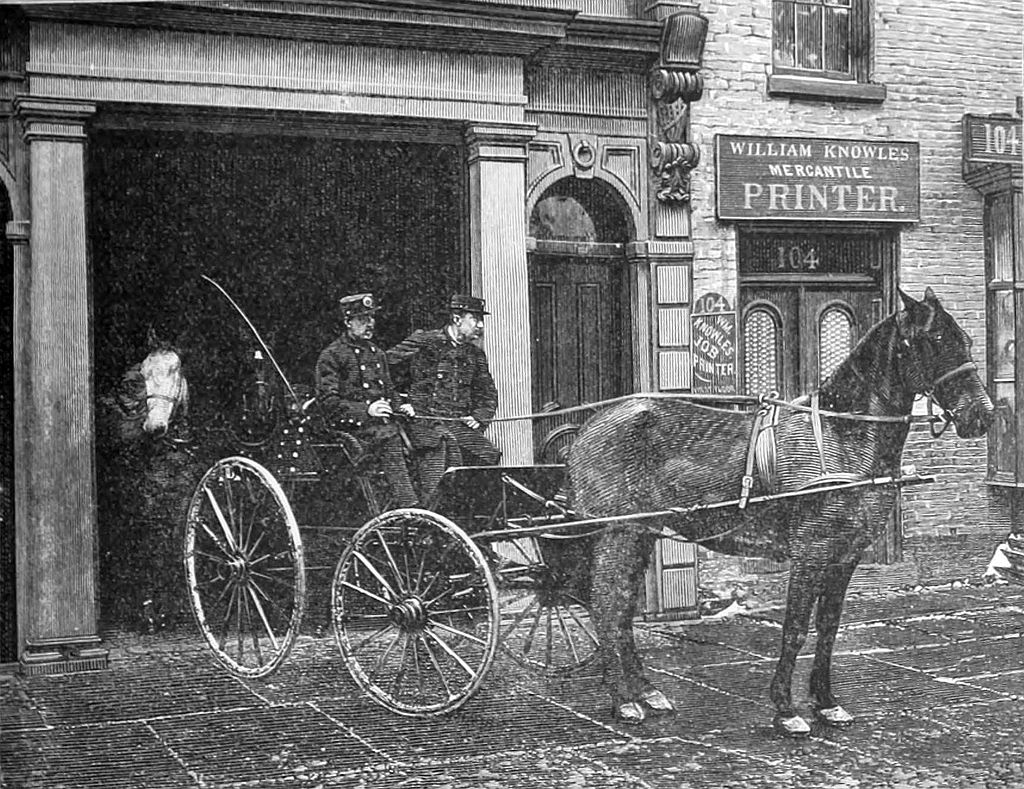As diverse as cities like New York are in the early 21st century, there is an institutional Irish legacy evident in nearly every neighborhood and, in some places, nearly every block. From Catholic churches named for Irish saints to brick and mortar reminders of memorable Irish Americans (the Al Smith Houses, the new Sheen Centre for Thought and Culture), the institutional presence of the Irish in New York is arguably as vibrant today as it was when one in four New Yorkers was of Irish descent.
But aside from the Catholic Church, few institutions remain as profoundly Irish as the Fire Department of New York. True, it is not as Irish as it once was, and the future is likely to make it even less so. But the traditions, the culture, the heroes and the history are steeped in the Irish-American experience.
I’ve often been asked why this is so, and I suppose that as the son, son-in-law, Godson and cousin of New York firefighters, I probably should have a good answer. I’ve studied the FDNY’s history, written a book about it and still enjoy hearing stories from friends and relatives about their experiences on the job. It would be easy to simply say that there was and is something in the Irish and Irish-American experience that draws men and women to service to others. From the convent to the police precinct house, Irish Americans have been a conspicuous presence in fields where service, and certainly not money or fame, is the main attraction.
That tradition of service was what led firefighters to climb those stairs in the World Trade Centre on September 11, and it is why today, 14 years on, the FDNY and all first responders are honoured at prominent sporting events, concerts, and civic ceremonies. But it would be silly, or worse, to make the argument that somehow Irish America has a monopoly on caring and courage. There were many Irish names among the fallen on 9/11, but public servants representing many traditions and background died when the towers fell. So if the call to service and sacrifice is not uniquely Irish, then what else accounts for the heavily green presence in the history of the FDNY?
When the Irish first arrived in New York in historic numbers during the Great Hunger, the neighbourhood heroes of the Five Points, the Bowery and other immigrant communities were the volunteer firefighters who put themselves in harm’s way – not because it was their job, but because it was their calling. And, to be sure, it was exciting work, and it had its own rewards. Young men like the burly Bill Tweed, with his red shirt and suspenders, were neighbourhood celebrities as they rushed through clogged streets with their equipment, running to, not from, danger. A man like Tweed could, and did, make something of himself through his fame and the contacts he made as a firefighters. Young men and boys newly arrived on the shores of America were fascinated by men like Tweed. They wanted to be like him, and why not? (Never mind that Tweed’s story did not end well – for many years, he was considered one of the city’s great civic leaders, and the Irish supported him even after he got into a spot of bother.)
So if you were young Hugh Bonner, a Famine immigrant, or John Bresnan, whose family left Ireland just before the Hunger, and you were poor and living in the Five Points, the Fire Department seemed like a way up and out of poverty and despair. Bonner and Bresnan both became volunteers, and when firefighting became a paid job after the Civil War, they went on to become two of the department’s greatest firefighters and innovators. The professional Fire Department of New York offered the Irish not just prestige and contacts, as the volunteer force did, but security – something they lacked not only in Ireland, but in their adopted country as well, where financial depressions in the 1870s and the 1890s exposed the flaws of a system that had no civic safety net for the jobless, the widowed and the orphaned.
Protection from the whims of the unregulated marketplace and the promise of a pension in old age – assuming that you did not die while performing dangerous work, as John Bresnan did in 1894 – certainly attracted many Irish immigrants who knew only the most insecure work of all, working on land they didn’t own. No wonder, then, that nearly 30 per cent of the FDNY’s 1,000 firefighters in 1888 were natives of Ireland, and about 75 per cent were Irish, or Irish American. In the years since, Irish-American firefighters and other first responders have created today’s culture of sacrifice and bravery, and given the department its rituals of mourning. It also has provided the firehouse kitchen with stories and a tradition of camaraderie.
The FDNY of the future will not be as Irish as it is today, or as it was a hundred years ago. At least not in numbers. But the traditions and sacrifices of the past ensure that it will never truly cease to be Irish.
Terry Golway is the author of ‘So Others Might Live, A History of New York’s Bravest, the FDNY from 1700 to the Present’



